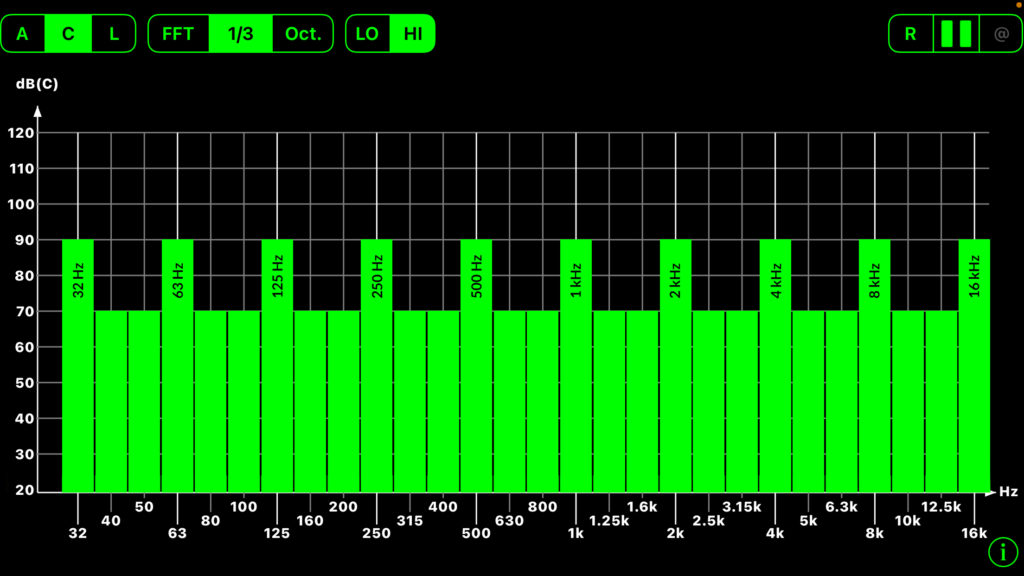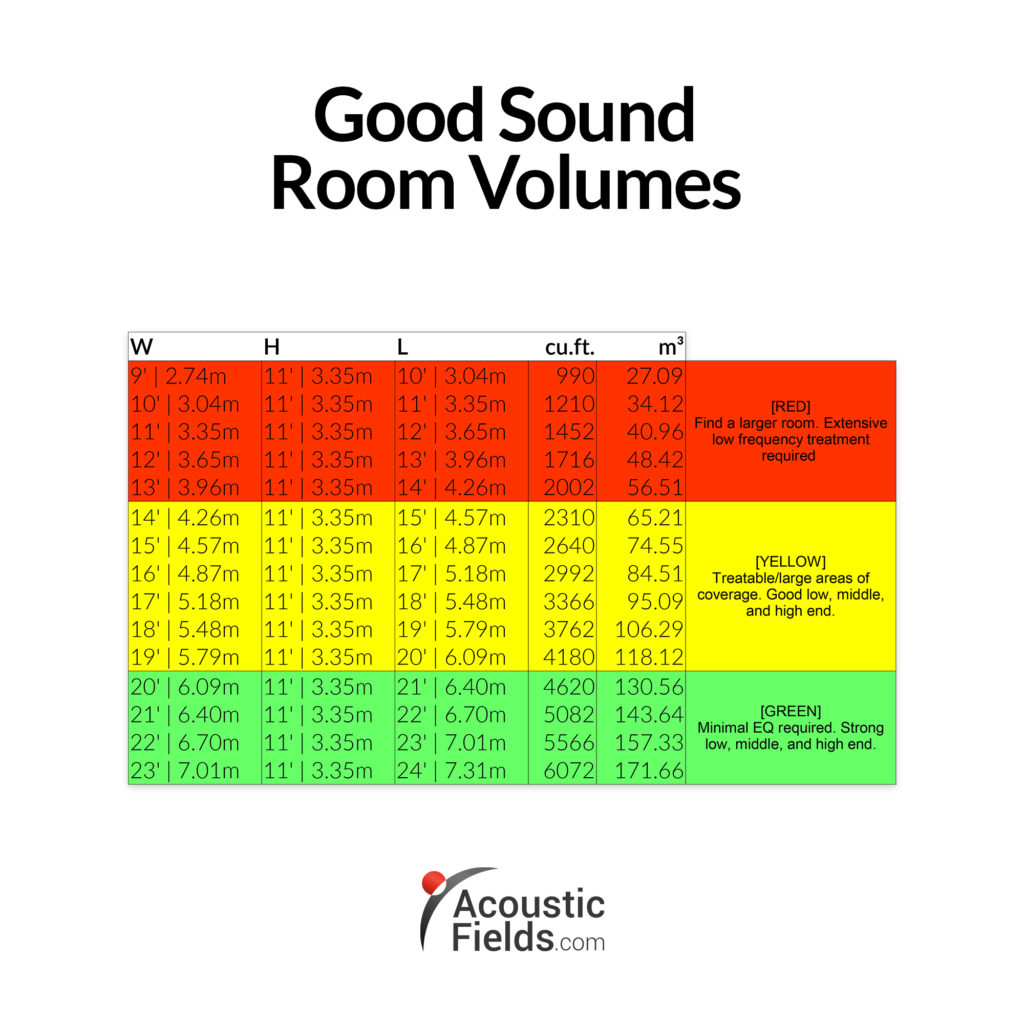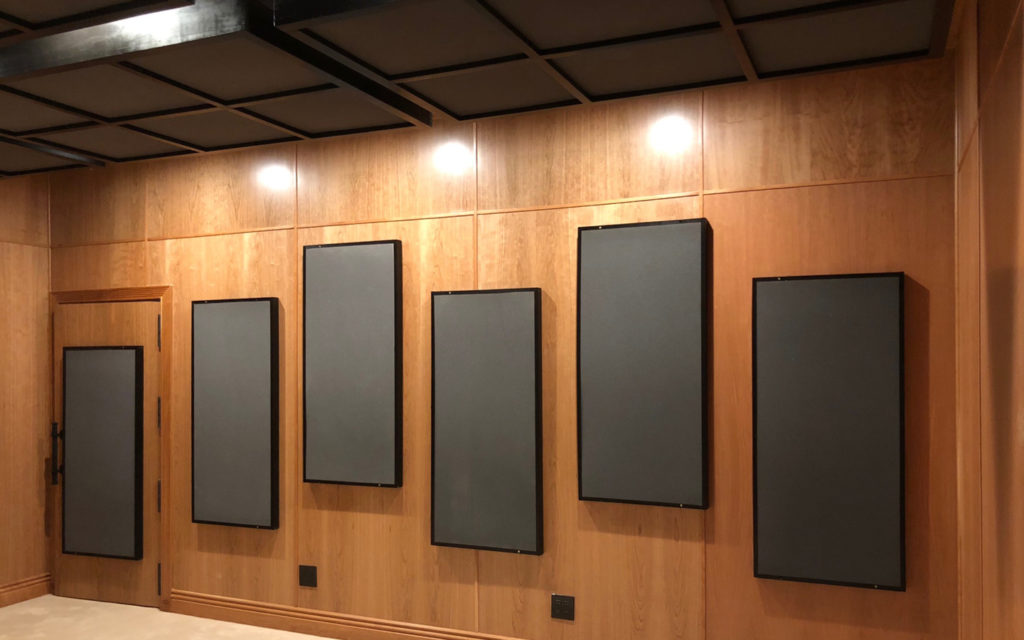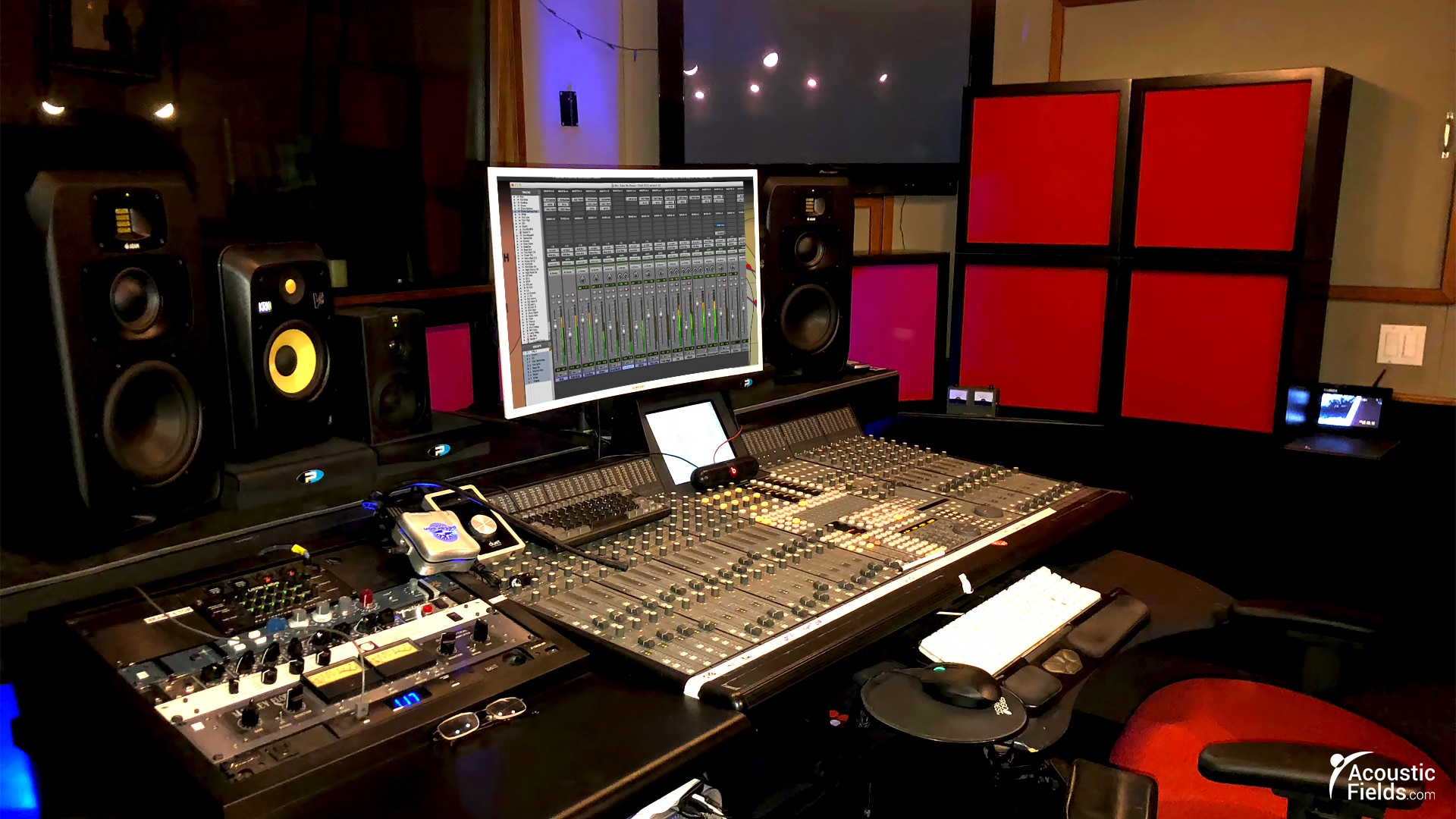Home studio design involves many variables. https://en.wikipedia.org/wiki/Recording_studio The first variable we must consider is the width, height, and length of the space we have to use for our home studio design. These dimensions determine room volume. The volume of our room determines how much low-frequency pressure the room will tolerate. Home studio design must focus first and foremost on the low-frequency pressure issues. It is the low-frequency pressure issues which are called fundamentals that have a direct impact on the harmonics or middle range frequencies. https://pages.mtu.edu/~suits/notefreqs.html We must manage the fundamentals in any home theater design project so that they produce less issues for us in the middle range harmonics. Look at the RTA graphic below and see the fundamentals below 125 Hz. See how they impact the middle range harmonics up through the frequency range. If you have a low-frequency issue at 32 Hz. you have its harmonic at 64 Hz. If you have an issue at 64 Hz., you will have an issue at 125 Hz. Follow this methodology throughout the frequency range to understand the relationship between fundamentals and harmonics.

The next variable we need to address in home studio design is usage. What tasks will you be performing in this room. Will you be recording instruments and vocals? Will you be mixing tracks that have already been recorded to make a song? We must look at your usage because the usage determines how much low-frequency energy you will be producing and the amount of low-frequency energy that won’t fit into the room will determine how many low-frequency issues we will have to treat within the room. Low-frequency treatment in our home studio design is the most costly part of our treatment budget. Every effort must be made to make sure we have chosen the correct room ratios of width, height, and length to minimize unwanted room modal issues. If we minimize the issues through room volume, we minimize the treatment amount required for low-frequencies. This will reduce our treatment costs and allow enough budget for proper middle and high frequency treatment type, amounts, and positions.

Once we have selected the proper room size and volume to match our usage, measured the low-frequency issues, and prescribed the necessary surface area requirements of absorption technology needed in our home studio design, we must then decide how we are going to incorporate the required amount of low-frequency requirements into our home studio design. We have two options. We can build the technology into our walls. If we build it into the walls, we achieve maximum surface area coverage when it comes to low-frequency management. We have a system called C.A.W. which stands for Carbon Absorbing Wall. It is our proprietary low-frequency management carbon technology that is built into the walls of your home studio design. Building the low-frequency management into the walls gives us the surface area requirements that the room requires and keeps the room free of free standing units. With low-frequency management, it’s all about having enough surface area to treat the issues. You can achieve this by building it into the walls or having freestanding units within the room.
Carbon Absorbing Wall: https://www.acousticfields.com/carbon-absorber-wall/
With the low-frequency issues resolved by either free standing units or our C.A.W., we can now focus on the middle and high frequency issues. We have two treatment choices when it comes to middle and high frequency issues. We have absorption and diffusion. Absorption for middle and high frequency issues can be accomplished with foam technology. Foam that is designed for middle and high frequencies can be designed with the proper rates and levels of absorption for music and voice. Music and voice are different from noise. Music and voice requires certain rates and levels of absorption to deal with the time signatures of the middle and high frequency reflections In small rooms, it is all about balancing the straight line or direct energy from our sources and the reflected energy from our room walls, floor, and ceiling. The more direct sound we hear, the more resolution and detail from source. The more reflected energy from the room walls, the more room sound or distortion we hear.

Diffusion technology is the chocolate sauce on the ice cream. https://www.acousticfields.com/product/sounddiffuser-acousticdiffuser-qd17/ After we have treated the low-frequency issues with proper rates and levels of absorption, we can then bring in diffusion to deal with making the room sound larger and increasing the resolution Diffusion is a technology to make a small room sound larger. It does this amazing feat by reducing the size of reflections so that they are not large. Large untreated reflections allow for our ears to localize the distance from which the surface area reflections come from. A diffuser takes these large reflections and breaks the energy up into smaller reflections. The smaller reflections are more difficult for our ears and brain network to localize. This non localization of reflected energy makes our rooms sound larger. Diffusion must be used on the surface area that matches the usage of the room. Home theaters benefit from diffusion on the rear wall and ceiling. For two channel rooms, diffusion on the front and rear walls will make the room sound larger. In mix rooms, we want to place diffusion on the rear wall to minimize the reflected energy from the rear wall so the reflected energy does not invade the mix.
About Us At Acoustic Fields: https://www.acousticfields.com/about/







